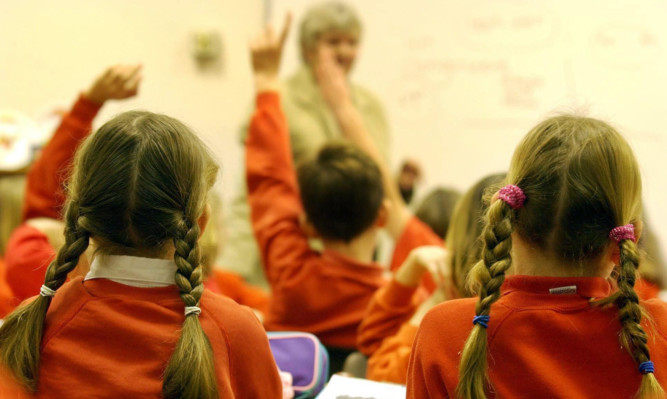
Bright idea could keep pupils alert.
Schools are being encouraged to install intense new lights designed to mimic the rays of the sun to help kids stay awake in class.
The Conservatives have asked the Scottish Government to look at the example of classrooms in northern Sweden by turning to eco-friendly “full spectrum” bulbs which are said to boost levels of concentration and happiness.
The electric lights emit a metallic glow believed to combat jet-lag symptoms brought on by gloomy winter weather and dreary dark days.
Kids are then far more awake in lessons, and unaffected by seasonal affective disorder (SAD), which scientists attribute to a lack of daylight.
Conservative politicians believe there is an argument for placing them in schools across the country.
A spokesman said: “It should be up to schools to decide but bright ideas from other countries which keep pupils and students interested and motivated in class are always welcome.
“In this case, it seems a very bright idea indeed.”
The bulbs are currently being tested in classrooms in Sweden’s far north, where daylight-robbed residents get just six hours of sunlight a day.
According to experts, natural light tells the brain to halt the production of melatonin the hormone that makes you feel tired.
With a lack of light, these hormones multiply, leading to feelings of drowsiness and jet-leg like symptoms. These new bulbs combat that by emitting rays with a similar wavelength and intensity to that of the sun, but obviously without the heat. In turn, the body’s biological clock is kept in sync and allows pupils to feel far more awake throughout the day.
Dr Mariana Figueiro, of the Lighting Research Centre at New York’s Rensselaer Polytechnic Institute, insisted that by experiencing the bright light first thing in the morning, kids are ensuring their body is kept on its correct cycle.
She said: “It’s very important to get a signal in the morning to reset your biological clock.”
The research in Sweden’s “Aurora” classrooms is the first of its type.
Moa Karlsson, 23, a researcher at Stockholm University, said: “The room acts as a substitute for going out for a walk in the sunshine that’s how it made me feel.”
Singer Natalie Imbruglia, 39, famously suffered with SAD when she moved from to London from Australia, while more than two million people are diagnosed with condition every year in the UK.
To counter the onset of the depressive illness, Manchester United legend Sir Alex Ferguson, 73, even installed sunbeds at the club’s training complex to boost his players’ vitamin D levels during the winter months.
The Scottish Government said changes to classroom lighting “are a matter for local school management”.

Enjoy the convenience of having The Sunday Post delivered as a digital ePaper straight to your smartphone, tablet or computer.
Subscribe for only £5.49 a month and enjoy all the benefits of the printed paper as a digital replica.
Subscribe